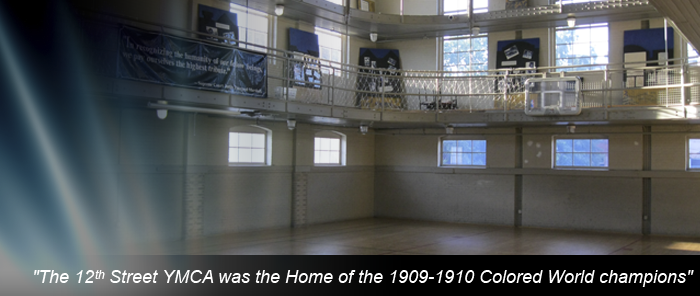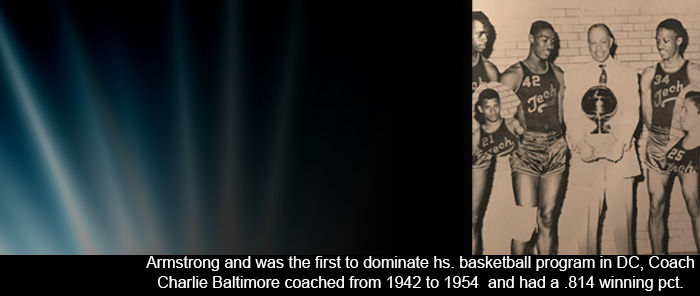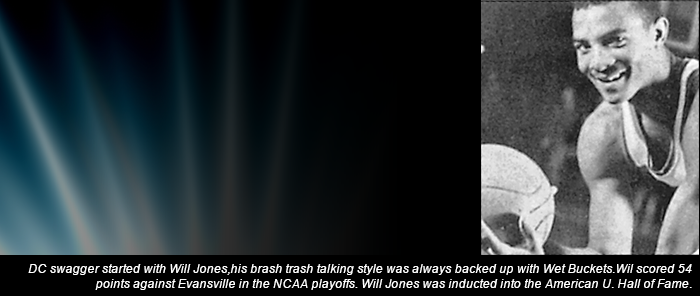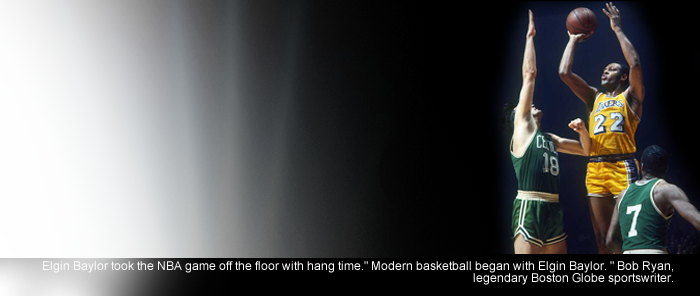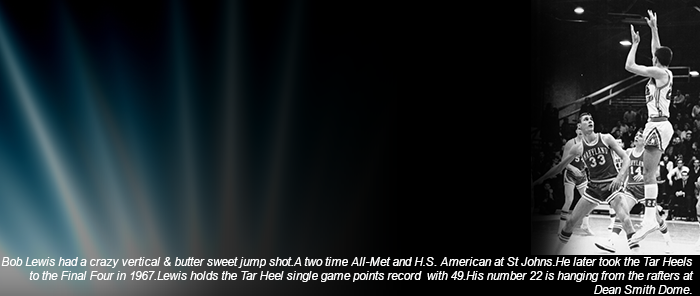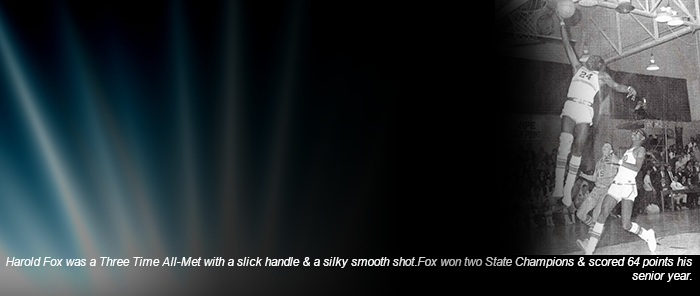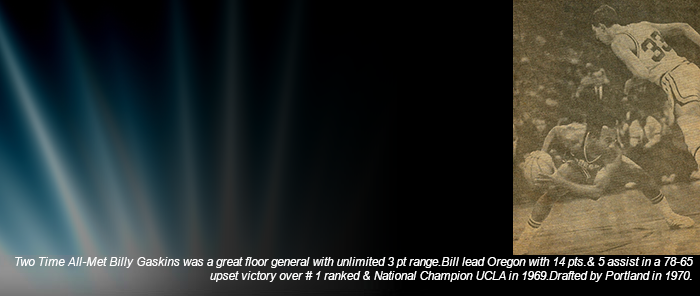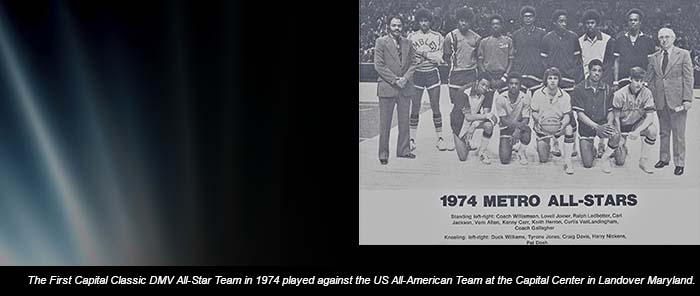The Best Seat in the House written by Brian Yeldell
A Classic View – Tales From
“The Best Seat In The House”

Bob Geoghan - 2011
Seeds of the Seats
One day he’s with Howard Cosell, Roone Arledge, Frank Gifford, and “Dandy Don” Meridith. The next day he’s hanging out in the office of the Washington Redskins and out comes legendary coach Vince Lombardi, all in an attempt to get an audience with the newest Redskin in town, Sam Huff (this was 1969). And, there was the time he found himself in the backseat of a limousine with arguably two of the greatest coaches in the history of basketball, ON ANY LEVEL, John Wooden and Morgan Wootten. Not to mention the many games that he attended, sponsored, hosted and organized over the last 45 years. So is the life of one of the background organizing, sports marketing, event management geniuses and gurus, Bob Geoghan. He was undersized, a little short on skill, but never lacking or desirous of being around “the games.” So, as a result, he found a way to have “the best seat in the house.”
Through the various games, events and awards ceremonies, “I met a lot of people that I never would have met.” In short, Bob Geoghan has said, on many occasions, that he never would have had an audience and been good friends with some of the luminaries of sports, unless, he hadn’t hung around, created the games, the events, the awards that he has created over the years. Some of those people who have been in his midst have included many of the top names and achievers of basketball, football, baseball and other sports AND life. Some of those people going back to the 1950s have included Red Auerbach, Morgan Wootten, and Bones McKinney throughout the 60s. After creating the Quarterback Club, they included Gerald Ford, Alexander Haig, Bob Dole, Donald Dell and Henry Kissinger, who were hosts or masters of ceremony. Then, came the Capital Classic and the many great college and professional players who have come through that game. Of the many people who would play or be a part of that game, some included, Moses Malone, Howard Garfinkle, John Wooden, and a veritable who’s who in the basketball world, Michael Jordan amongst them.

Bob Geoghan & John Wooden
This story starts out in the Northeast section of Washington, DC in a strong Irish community just off of Rhode Island Avenue in DC. Born in 1934, Robert J. Geoghan was the youngest of 2 children, who was actually born in Massachusetts and later moved here when he was 7 years old. As was the case with so many other catholic families in that time, he went to catholic school, first at St. James in Mount Ranier, MD and then at Gonzaga, the alma mater of Pat Buchanan, former presidential candidate, Governor Martin O’Malley current Governor of Maryland and current head coach of the Georgetown Hoyas basketball team, John Thompson, III (himself a 1984 Capital Classic participant). Basketball is another great place to talk about Bob Geoghan. You see, he was an undersized sports enthusiast, who, through much of high school, stood between 5’2” and 5’6”, so his interest quickly turned to viewing the games. He would either walk to or ride his bike to many of the more competitive playgrounds in the area. It was at places like Langdon, Taft, and Turkey Thicket, where his love of the game not only was fulfilled and his thirst quenched, he would go on to want more, to see more, so he went to more and more games, eventually wanting to put them together to see the best and highest level of competition. While it may seem ironic, silly and perhaps a bit amateurish, he would be the person in his neighborhood who put together games and leagues. It was the seeds of a career that he would build. Some of these early players that he would watch included Jack George, Jack Sullivan, Stan Kernan and even African American players such as Elgin Baylor and later Dave Bing.
When Mr. Geoghan really started listening to and watching the games, it was all sports, including football, baseball, boxing and basketball, given that television was a treat in most households. And, many of those earlier seats were right next to his grandfather while listening to some of the championship fighters on the radio. He would go to the games in his immediate area, including some of the guys listed above, such as Stan Kernan’s great McKinley teams of the late 40s, that would have long winning streaks and guys who were multi-sport stars. In a recent conversation, Geoghan talked about some of his early heroes, such as Jack George, Jack Sullivan and Kernan. This was the mid-50s and a little later, when teams like the 1958-1959 Archbishop Carroll team that won 55 straight games were all the rage. Basketball was being played at a high level during this time, as it is currently. One of the things that really captivated, fascinated and sparked curiosity was why the African American players played together during the summer and on playgrounds, but not during the year. Some of the other players and teams that were matriculating include the incomparable Elgin Baylor, Dave Bing, Skeeter Swift, Sid Catlett, and Austin Carr. THIS was the beginning of Bob Geoghan’s thirst for the game(s) and wanting to put certain teams together.
High School, Post High School and Early Work Career
Immediately after high school, Geoghan wasn’t sure exactly what he wanted to do as far as a career, so he went to University of Maryland for not even a year and decided to join the Air Force. Even though, as any good catholic would want, if he had an opportunity, he certainly would have wanted to go Notre Dame, because they were one of the teams that he would listen to as a kid. While in the Air Force, he leaned toward wanting to be a pilot. He did not pursue flying, but rather did become an Air Traffic Controller. He did not do this, after his stint in the Air Force, but did go back to his fascination with and for the games. He held several jobs throughout the 60s while always going to and being around the games. Some of those jobs included being a paper salesman and also an insurance salesman. As it relates to the sports and games, until recently, Bob Geoghan was a season ticket holder for the Washington Redskins, and several University of Maryland teams, as well as going to high school, college and other games. It was his curiosity with the games that allowed him to meet different people who were a part of the sports fabric, as well. Of course, in this day of increased scrutiny and over-hyped nature of the games and the people who play, coach and broadcast the games, he would not be able to get as close as he did to the participants. But, back then, he did and got to know Morgan Wootten, Joe Gallagher, some in the Redskins front office, as well as people in the, then, Baltimore Bullets, front office. In fact, when Earl Monroe was drafted, the number one draft pick flew into National Airport and Geoghan was asked to pick him up from the airport. There was no big press conference or limousine or anything like that, just a guy from DC who was close to the game and who lived close to the airport.
He was working in the insurance business, as a salesperson, when he started The Quarterback Club, which was 1964. In 1969, he started the Quarterback Club Player of the Year. It was around this time that he also worked with events such as the predecessor tennis event to today’s Legg Mason Tennis Classic and the Virginia Slims. It was with these events that he would meet some of the biggest names in sports management like Donald Dell, David Falk, Lee Fentress and Mark McCormack. As mentioned, basketball was getting bigger and bigger in the 60s and it was getting ready to get bigger still for Bob Geoghan. He had begun to get around DC and be a part of the sports scene. While basketball was and is a passion, he actually made his first foray into hosting events by wanting to see a football team from Virginia (Annandale) and a team from Maryland (Richard Montgomery) play each other. They were co-champions in the Washington Post and had not played each other. Well, after not being able to get that game together (due to some technicalities that existed within each school’s jurisdiction), he decided to try his hand at getting other games together. He had already had a friendship with two of the more powerful and visible coaches around, Morgan Wooten and Joe Gallagher, from DeMatha and St. John’s respectively. After the two immediate aforementioned men had been instrumental in getting Dave Bing a scholarship, he thought that putting Maryland players against Virginia players could and would be an exciting undertaking, as well as one that could get scholarships for the players. Again, knowing the two gurus of basketball in DC made this fairly easy.
Capital Classic – The Beginning & The Blossoming

1976 (Third Year) Capital Classic Program
As the American Express ad and commercial goes, “membership (and having good friends) has its privileges.” Over the years, Mr. Geoghan always wanted to see the best and top games of the day. Thus, as the 1960s were coming to a close, he put together All-Star games in Maryland, at Blair High School, as well as B-CC High School. This was 1972 and 1973. In 1974, the former Baltimore Bullets moved and became the Washington Bullets and a new arena was built for them to play. The games that he was doing were getting bigger and bigger and a national star had just left DC, Adrian Dantley, who would go on to star at Notre Dame, lead the NBA in scoring a couple of times and eventually make it to the Naismith Basketball Hall of Fame. There was a convergence of circumstances that came together to organize, produce and get exposure for this soon to be biggest game of its sort. The Bullets were going to build a brand new building and Bob Geoghan’s game was growing. He went to Abe Pollin and asked could he hold the first Capital Classic at the new arena. It helped that his friend Morgan Wootten was by his side. Given Coach Wootten’s stature as an iconic high school coach went a long way and his contribution to the game was and has been significant. Abe said yes and the game grew to be one of the most important and best games of its sort in the 70s, 80s and 90s, with a veritable “who’s who” in basketball having involvement.
The VERY first game almost turned out bad. The biggest name and most highly touted and recruited player, Moses Malone almost did not play. However, he did anchor the national Team, as well as Butch Lee and Skip Wise of Marquette and Clemson fame, respectively. The local team had Mackin, DeMatha and future ACC and Notre Dame stars like Donald “Duck” Williams, Keith Herron, and Kenny Carr. This was merely the beginning. The Capital Classic grew from those early days and became a place that, as the early slogan and advertising projected and said, “See them first here!” This was a great sentiment that happened to be true. Nowhere could you see such great talent before they went on to college and professional ranks all in the same place. Remember this was the mid-70s, long before ESPN and other media outlets. Yet another great aspect and good side effect of playing in the Capital Classic, both the big game and the preliminary game was the fact that many guys and later girls were seen for the first time and granted scholarships, as a result of their appearance in this national showcase. DCbasketball.com’s founder Penny Greene tells the story of being in the preliminary game and having his eventual college coach, Bill Foster, seeing him and recruiting him to play for and have an outstanding career at University of South Florida. This is one of many such stories and great side effects to a game that has provided so much to so many in and around the Washington, DC region.
In addition, it cannot be understated the amount of philanthropy that has been in effect, as well. Starting in 1977, the Capital Classic began a long running association with McDonald’s and later (1984) The Ronald McDonald House. The Ronald McDonald House was opened in 1984 for families of sick children. In an attempt to allow sick children to see star basketball players, before the game the players would go see the children, take paraphernalia and also, allow the players to have a place where they could begin to understand that ball was not just about ball. Games of this sort and the associated celebrity was about giving back, as well. Over the years, the Capital Classic has given over $10 million to this charity. THAT’S TEN MILLION DOLLARS! This is an amazing sum from a series of basketball games. This aspect of the game sometimes goes unnoticed due to a couple of reasons. One reason is that Mr. Geoghan has been SO unselfish and seemingly embarrassed as a self-promoter. Yet another is because the philanthropy and fund-raising just hasn’t been publicized as it should and finally, the games have been so good and the players go on to such dizzying heights that parts of the showcase get lost due to much of the glitz and glamour.
See Them Here First – For Forty Years
The Capital Classic - The Early Years – 1970s
In addition to the philanthropic efforts, it cannot be understated as to what the sports and event marketing landscape represented during this time. In the age of 24 hours news and sports cycles and highlights and the plethora of all-star games connected to showcase and highlight various companies and corporate entities, sports drinks, mobile phone companies, street agents, unscrupulous souls, electronic game makers and others interested, it should be understood that there were not a lot of places where one could see these premier basketball players ALL under one roof! The Capital Classic provided this when not many others were doing so. The very first game put over 11,000 people in those seats. Before the end of the 70s, the games were being sold out (over 19,000) and were much talked about in and around the Washington, DC area, as well as nationally.
Capital Classic - 1980s


1981 Local & National Team
By the end of the 1970s, The Capital Classic was THE place to see and be seen as a High School basketball player. In the 60s and 70s, both Street & Smiths and Parade were the pre-season and post season “place of distinction", as far as getting an All-Star “nod.” In 1977, McDonald’s got associated with the game and began to have an all-star team of its own. With its highly respected voters and the great games that were being put on, it soon changed and the most looked at, respected and coveted designation by high school basketball players was to become a “McDonald’s All-American.” Getting this distinction was the coup d’état. In addition, so was playing in the game, both the Capital Classic and The McDonald’s Classic. Some of the names that appeared throughout the years have included Mark Aguirre, Magic Johnson, Michael Jordan, Patrick Ewing, Shaquille O’Neal to Kobe Bryant, Carmelo Anthony, LeBron James, Michael Beasley, and Kevin Durant along with over 1,000 other guys since 1977. It is said that EVERY NCAA championship team since its inception has had a McDonald’s All American with the exception of the 2002 Maryland Terri pan’s team – which is quite a feat and fact.
Capital Classic - 1990s
The Capital Classic went on throughout the 90s and saw some great players. Some of those players to be a part of the game during that time included Randolph Childress, Grant Hill, Jason Kidd, Marcus Camby, Juan Dixon, Antawn Jamison, and Elton Brand. In addition, the record for the most points ever scored (40) in the 38 year history of the game was posted during this time by Louis Bullock in 1995, who went on to an illustrious career at University of Michigan and in Europe. There was even the first multi-generational player/father-son situation with Moses Malone, Jr. playing in the 1998 game. One of the downsides or consequences of pioneering such a game is the advent of copy-cats. That is one way to look at it and see it. The other is that imitation is the most sincere form of flattery. One way or the other, some of the talent that has been a staple for the game has been eroded or diluted. The talent that may want to play in the game may be halted or become more difficult because of the increased rules and regulations that limit the number of All-Star games in which a player can play In short, All-Star games became a “different world.” In addition, the game(s) has (have) become BIG business. Again, Geoghan gives plenty to charity. Not everyone is on the “charity page(s).”
Capital Classic - 2000s


2001 & 2005 Capital Classic Programs
The 2000s have seen basketball and the showcasing of talent become a much different world. High school and the games played there are not as important. It was becoming different in the 1990s, but the 2000s saw an explosion of the AAU circuit. Players no longer play 25 to 30 games per year, only during the high school basketball season. During the 2000s, it is nothing to see a player play 100, 125 to 150 games per year and the surfacing of different sponsors and sneaker companies looking at players and their conduits at a much earlier age. In addition, you have the advent and presence of go-betweens like club coaches, street agents, and other “intermediaries.” With all of these games, and the domination and “must participate” posture and thinking by prospective players and their support systems, All-Star games become almost an after-thought for seeing young basketball talent. However, even with the immediate aforementioned, local players such as Lamar Butler, Delonte West, Jarrett Jack, as well as semi-local and national players such as Carmelo Anthony, Amar’e Stoudemire, LeBron James and Dwight Howard – all bona fide basketball stars! There is and will always be a place for games to highlight good basketball and good basketball players. The Capital Classic and Bob Geoghan and his vision are proof of such. In addition to having guys get last minute scholarships, the incredible amount of funds raised for great causes and the tradition that was started make the Capital Classic a great event and showcase, even after all these years.
Still Got It – The Best Seat In The House
Today, you will still find Bob Geoghan either with or showing people to the “best seat in the house!” If you encounter him you would never think that he is 77 years of age, either by sight or his continuous willingness and desire to take the games and events to the next level. He talks excitedly about going digital. He talks about several of his contemporaries in the games and events business who have cashed out. With all of his contributions to basketball and other sports, he certainly deserves his face or bust on the Mount Rushmore of basketball or a bust in the Hall of Fame and a key to the city of Washington, DC for his many, many years of putting and keeping Washington area basketball on the forefront of the nation. The Capital Classic is going into its 39th year. That’s 39 years of finding, picking, arranging, bringing other basketball luminaries near and far together to nominate, highlight, celebrate, and showcase the nation’s best high school talent. The game has been dialed down a bit, due to the plethora of like games and some of the rules, but there will be a ramping up to the 40th year anniversary. There will be calls to have many of the former players, coaches, sponsors, participants, stakeholders, beneficiaries (close or distant) city, county and other state officials, as well as anybody who has ever had an association to come out and celebrate the FORTY YEARS of goodness, fun and foresight of such a game and event.

2010 Capital Classic Program
Seemingly fervent about wanting to shy away from the cameras and any other spotlight, Bob Geoghan is, unfortunately, not a self-promoter. Unless someone points him out and/or introduces him as the host, organizer and man behind such great sporting events, you may not ever know the man. The reason why he has been able to get good seats, sell good seats is because it is ALWAYS about artistically being good and the money taking care of itself. By no means is Bob Geoghan NOT trying to make money. And, by no means has he not made money. It is just that he is very concerned with the event being a success and satisfactory for all of the stakeholders, from the participants, sponsors, awardees, players, fans, guests, spectators, etc. If all of them are satisfied, even though you can never satisfy everyone, then he feels, again, that the money takes care of itself. And, with 46 years of the Quarterback Club – both in DC and Baltimore, involvement with Legg Mason & Virginia Slims Tennis Classics, McDonald’s All-American teams, The Aflac Baseball Game, the Army Football game, DC Basketball Hall of Fame, associations with McDonald’s and the incredible amount of goodwill, fundraising and philanthropy and years that they have been in existence, as well as the crown jewel, The Capital Classic, one can imagine that he has had both a Classic view and one of the best seats in ANY house!





